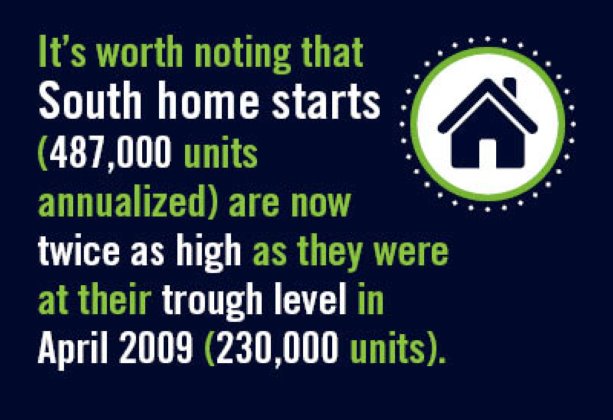The Southeast (SE) Region of the United States is comprised of eight states. In alphabetical order, they are: Alabama, Florida, Georgia, Kentucky, Mississippi, North Carolina, South Carolina and Tennessee.
Among those states, the lowest unemployment rates are currently being recorded in Florida (6.3%) and South Carolina (6.4%).
The steepest jobless rates are in Georgia (8.1%) and Mississippi (7.9%). The overall U.S. figure is 6.1%.
The fastest employment increases have been occurring in Florida (+2.8%) and North Carolina (+2.4%).
As office-based employment picks up – and we’ll get to the drivers in a moment – and new construction remains mainly stuck in neutral, increasing pressure is being exerted on rents.
Net rents are expected to rise at a more rapid pace than inflation (+2.0%) this year, probably in the +3.0% to +4.0% range.
Three sectors are accounting for most of the increase in office-based employment across the country.
The front-runner, by a considerable margin, is the high-tech sector. One only has to consider that the NASDAQ index has skyrocketed by more than 200% since its most recent trough in February 2009 to appreciate how strong activity levels are at knowledge-based firms.
While positive impacts from the strong high-tech sector are being felt across the country, the major benefits are being reaped on the West Coast.
The second and third major contributors to office employment growth are financial and professional services (e.g., legal, accounting, architectural/engineering and advertising firms, etc.) respectively.
In the SE, Florida (+2.2%) has recorded a solid increase in financial sector employment, with Tennessee (+1.8%) and North Carolina (+1.3%) following next in line.
In professional and business services, the SE leaders are North Carolina (+7.0%), Tennessee (+5.5%) and Georgia (+4.8%).
Within the SE’s eight states, there are eight major metro commercial markets.
The national office vacancy rate has improved to 14.5%, according to real estate brokerage and consulting firm, CBRE Inc. At such a level, they sit about halfway between their pre-recession low (i.e., their best level) and their recessionary high (i.e., their worst level).
The metro-wide office vacancy rates for the SE’s eight major centers, from best to worst, are as follows: Nashville (10.4%); Charlotte (12.6%); Tampa (15.2%); Miami (15.5%); Fort Lauderdale (+15.7%); Orlando (18.8%); Jacksonville (19.7%); and Atlanta (19.8%).
The metro-wide figure is a composite of separate downtown and suburban readings.
The city with the lowest vacancy rate in the suburbs is Nashville (8.0%).
Charlotte is the urban center that stands out with respect to its downtown office vacancy rate, which stands at only 9.0%.
Ongoing healthy gains in employment across the U.S. (+215,000 per month on average so far this year), which also generate more income, are fueling better retail sales.
Year-over-year U.S. total retail sales in August were +5.0%, with even stronger performances in the motor vehicles and parts (+8.9%) and building materials and garden equipment (+6.7%) sub-categories.
The latter is an offshoot of the gradual improvement in housing starts across the nation. The Census Bureau’s “South” designation, which is broader than just the SE (i.e., it includes Virginia and Texas, among others), traditionally accounts for half of the national level of new home ground-breakings.
It’s worth noting that South home starts (487,000 units annualized) are now twice as high as they were at their trough level in April 2009 (230,000 units). There is still considerable pent-up demand, given that the pre-recession peak was 1.1 million units for the region.
Being skittish about future prospects has become the norm for shopkeepers and owners considering retail investments. But as real estate prices experience further lift, homeowners will become more confident about spending money on their properties. This will take a variety of forms, including renovation projects and purchases of home entertainment systems.
The SE states with the fastest increases in retail trade employment this year have been Florida (+2.8%) and North Carolina (+2.4%).
And let’s not forget the hotel/motel market. Leisure and hospitality year-over-year job gains have been strongest in North Carolina (+7.0%), Tennessee (+5.5%) and Georgia (+4.8%).
Where jobs are increasing the most is also where one would expect related investment spending.











Recent Comments
comments for this post are closed